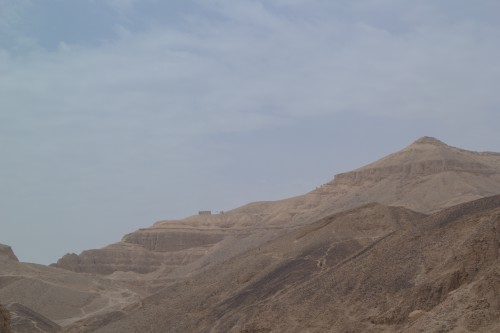
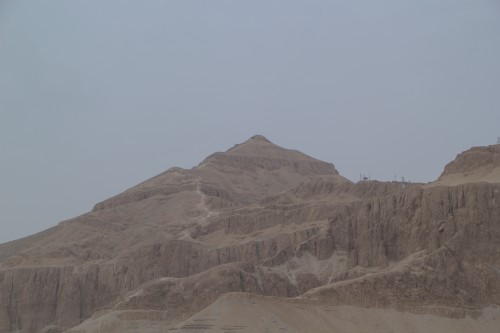
When we woke up, our room was 30 degrees celsius, 86 Fahrenheit. Sometime in the evening or overnight the AC went down. We were sort of hoping it was just our room, but it was not. The dining room for breakfast was, if anything, hotter. Everyone was fanning themselves, the kid in the stroller was crying, not a particularly good sight. At 8:00, we took a motorboat from our ship across the river to the West Bank, and then got in a van heading up to the Valley of the Kings. The Valley of the Kings is unique in Egypt because nothing is visible above ground - no pyramids, no obelisks, no carved statues, just a ton of underground tombs. The area is just a bunch of limestone and sand, and looks (and likely is) quite inhospitable. There is one prominent hill that is shaped like a pyramid, and folks seem to think that this was a subtle (or not so subtle) nod to earlier generations.
 |
 |
So far over 60 tombs and chambers have been discovered, and undoubtedly there are more to be found. Despite the best efforts to hide everything, almost all of the tombs seem to have been opened and robbed (and it has been 3000-3500 years, so that isn't really all that surprising). King Tutankhamun's tomb wasn't robbed, and despite it being one of the simplest and smallest tombs, it is the most famous because of that. Sadly, no photography is allowed in any of the tombs, which is all the more of a bummer since the colors inside the temples were spectacular, with vibrant colors that have lasted 3500 years. [Home Depot, Lowes, Sherwin Williams, etc., pay attention.] The entry ticket allows you to see three tombs (there are generally around eight that are open at any given time, and they rotate to prevent wear and tear), and a separate entry ticket to see King Tut's tomb. The first tomb we saw was for Ramesses IV, which, as best we recall, had an especially starry ceiling in places (blue paint with yellow stars), plus an elaborate ceiling above the sarcophogus that showed the various gods of the sky, the atmosphere, and the earth, and their inter-relationship to one another.
The next tomb we saw was King Tut's, which was found by accident in the early 1900s. Howard Carter, who was doing most of the excavation, thought he had found something, then saw something indicating that his digging was only turning up stuff from the neighboring tomb, and gave up. One of the laborers was digging for making a fire for boiling water, and found evidence indicating there was in fact another separate tomb, and that's what led to the actual discovery. The tomb was tiny compared Ramses IV's (and in fact the others we saw as well), but had the benefit of having an intact golden mask. We saw what we think was the real body as well, which was very short, even accounting for shrinkage from dessication.
Then we saw the tomb of Ramesses III, which was notable (to us at least) for having a crooked hallway. The tomb was originally started by Setnakhte, but abandoned when the pathway accidentally broke into the earlier tomb of Amenmesse. The tomb was then restarted and extended and on a different axis for Ramesses III. At the end of the tomb, the burial chamber was quite large and had a big granite sarcophogus. Also, it had numerous "side rooms" off of the main hallway that had very detailed and very colorful depictions. Finally, we saw the tomb of Merenptah, who was the son of Ramses II. It had a very long hallway with a very steep decline, and was not finished - at the very end there were some roughly carved walls, dirt floor, and no carvings yet on the wall.
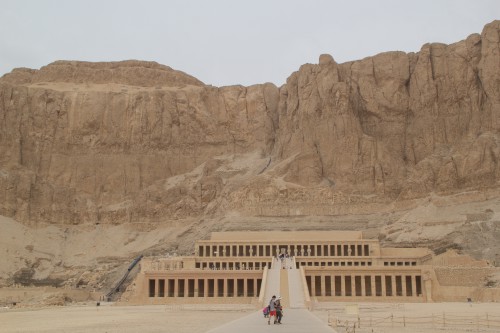 |
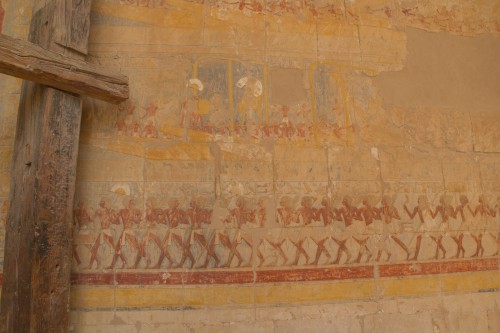 |
 |
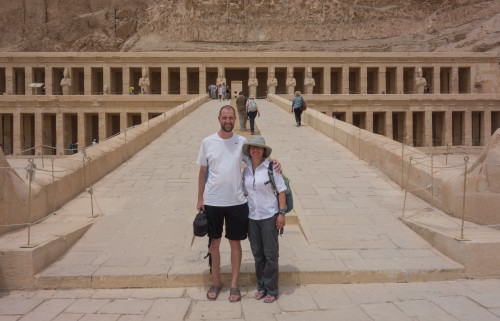 |
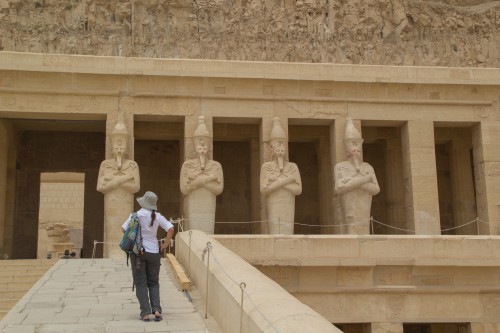 |
 |
 |
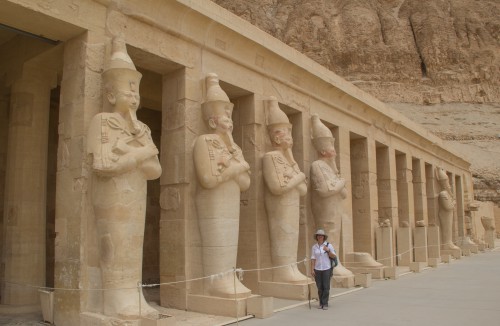 |
From there we went to a tomb actually above ground, that of Hatshepsut (pronounced "Hat Cheap Suit"). Hatshepsut is famous for being the "Lady Pharoah," and was in power around 1500 BC. She was successful in warfare early in her reign, but generally is considered to be a pharaoh who inaugurated a long peaceful era. She re-established international trading relationships lost during a foreign occupation and brought great wealth to Egypt. We saw some carved reliefs depicting her mission to the Land of Punt (present day Somalia). That trading wealth enabled her to initiate building projects that raised the caliber of Ancient Egyptian architecture to a standard, comparable to classical architecture, that would not be rivaled by any other culture for a thousand years. She managed to rule for about 20 years. This temple was one of the most, if not the most, famous of her buildings. It is well-known for having a colonnaded structure and its symmetry.
After leaving Hatshepsut's temple, we visited the Valley of the Queens, which is a bit of a misnomer. It is similar to the Valley of the Kings, but for non-Pharaohs. This includes Queens, but also includes princes, princesses, and viziers (kind of like a Prime Minister). All of the tombs were built roughly 3000-3500 years ago. We saw a tomb of Amunherkhepshef, who was one of Ramesses III's sons. Except for the tomb of Nefertari (the same Nefertari whose temple we visited in Abu Simbel) - whose Valley of the Queens temple is apparently off the charts, and which costs an arm and a leg to see - Amunherkhepshef's temple is the showpiece of the area. The reliefs were remarkably well-preserved, and incredibly colorful, apparently showing Ramesses holding his son’s hand to introduce him to the gods that will help him on his journey to the afterlife. The temple also had a mummified fetus on display in the same temple.
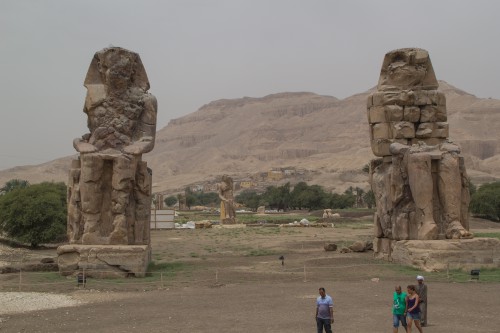 |
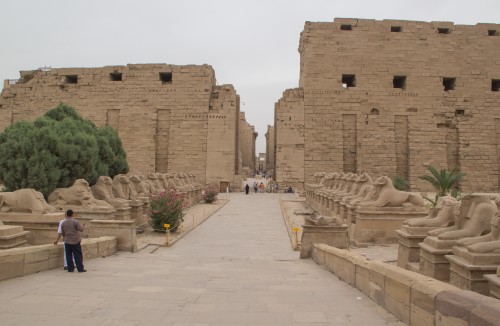 |
From the Valley of the Queens, we saw the Colossus of Agamemnon, two large (but pretty beat up) statues in the middle of nowhere, farther to the east from the Valley of the Queens, but still on the west side of the river. Ehab indicated that there were some other antiquities nearby that had only recently been (re-)erected, and that archaeologists were finding stuff almost daily in the area. After visiting that area, we took a boat back to our boat (we were docked on the east side of the river). To everyone's delight, the AC was working again. Our room was down to 26C from 30C this morning. We went to lunch, and were finished and about to get up when Stuart and Heather sat down, so we stayed and chatted mostly about the Royals and their impact on the UK economy. When we got back to the room after lunch, it was back to a much better 22C (about 72 degrees F), which is where it should have been all along. We thought our afternoon excursion started at 3, but no, that was just some of the guests (since we all had different guides with us). Instead we left around 3:45.
 |
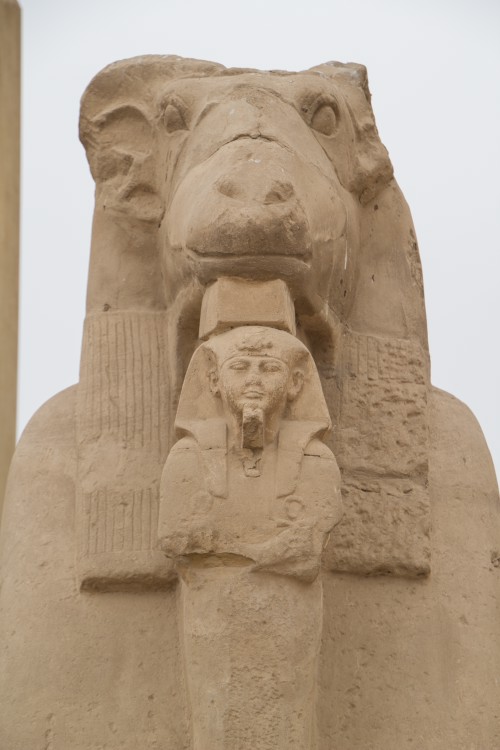 |
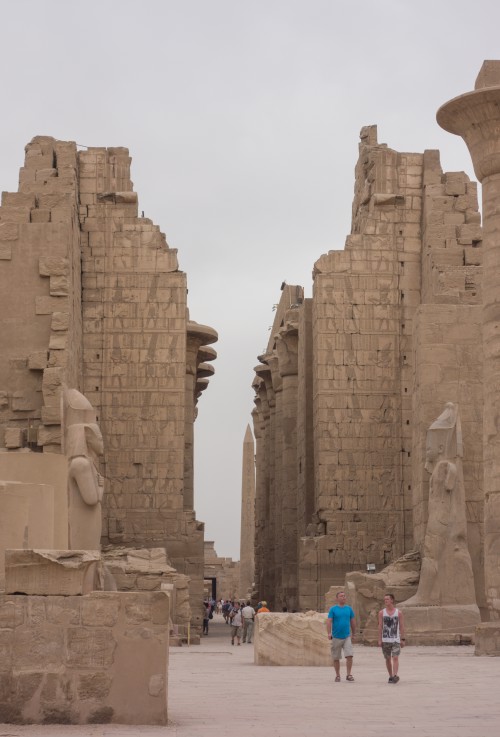 |
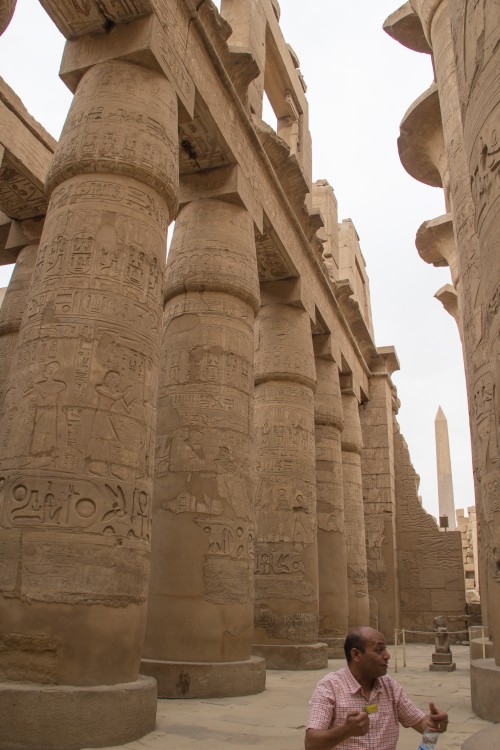 |
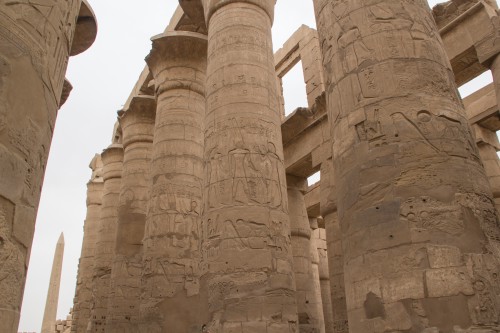 |
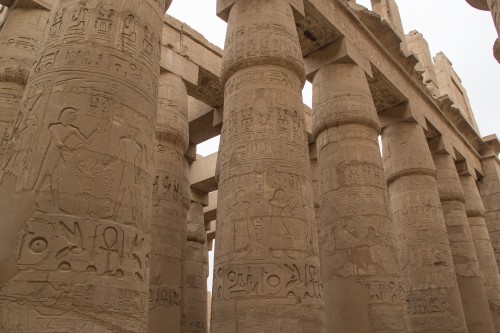 |
 |
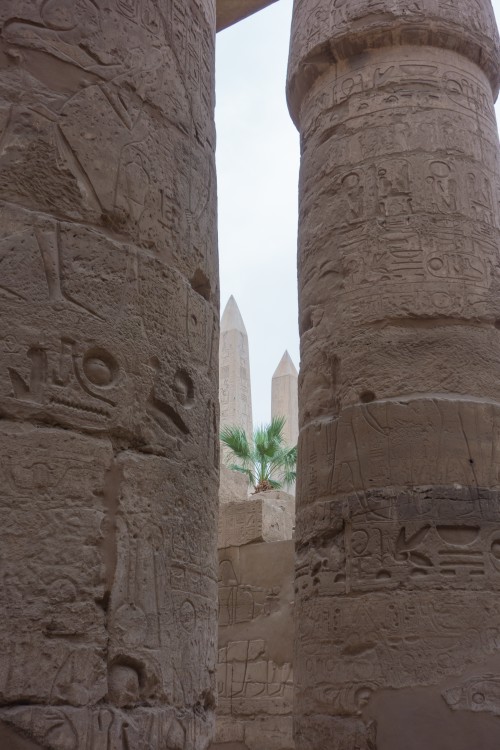 |
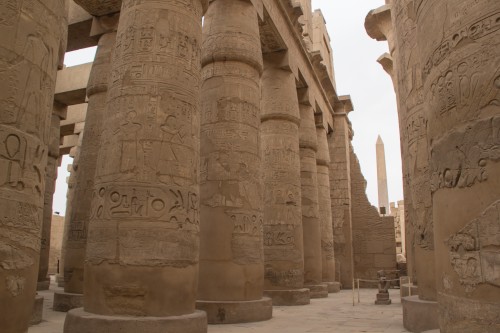 |
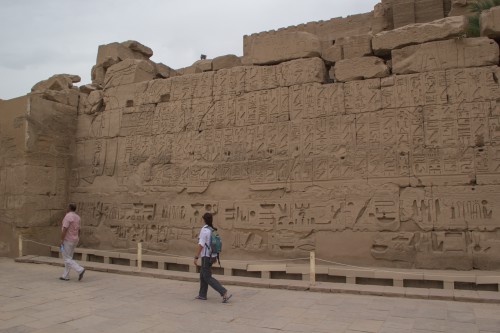 |
 |
 |
Our first stop was the Karnak Temple Complex, which is a massive complex in the former city of Thebes (now called Luxor). The complex comprises a vast mix of decayed temples, chapels, pylons, and other buildings. Building at the complex began during the reign of Senusret I (around 3200 BC), and was added to slowly but surely by those that followed, each leader having a separate area in the complex. Approximately thirty pharaohs contributed to the buildings, enabling it to reach a size, complexity, and diversity not seen elsewhere. Few of the individual features of Karnak are unique, but the size and number of features are overwhelming. Even to us, it was obvious that it was not built all at once, as the areas looked substantially different from one another. The most incredible sight (to us at least) was the collonade called the Hypostyle Hall, which had 134 massive columns arranged in 16 rows, built in the area from Amun-Re's rule. Most of the columns are 30 feet tall, but some are over 60 feet tall, and they're all about 10 feet in diameter. The Hypostyle Hall has got to be the World's best hide and seek location.
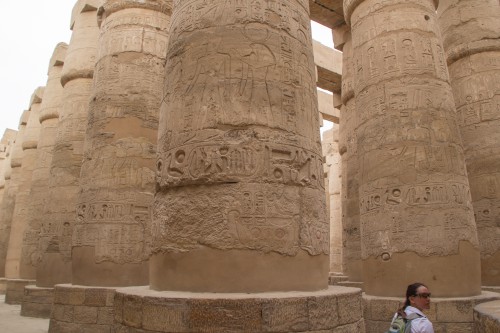 |
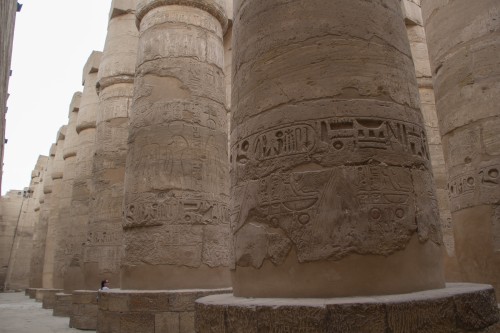 |
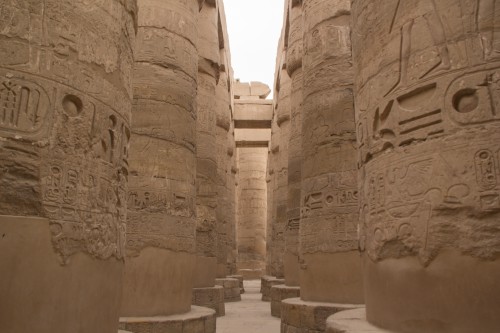 |
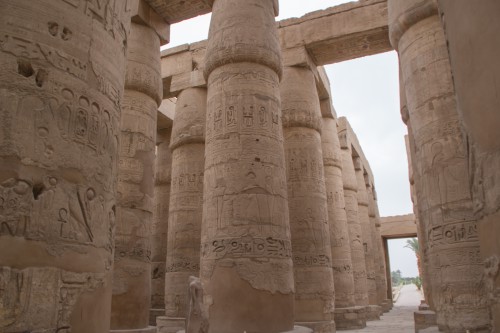 |
 |
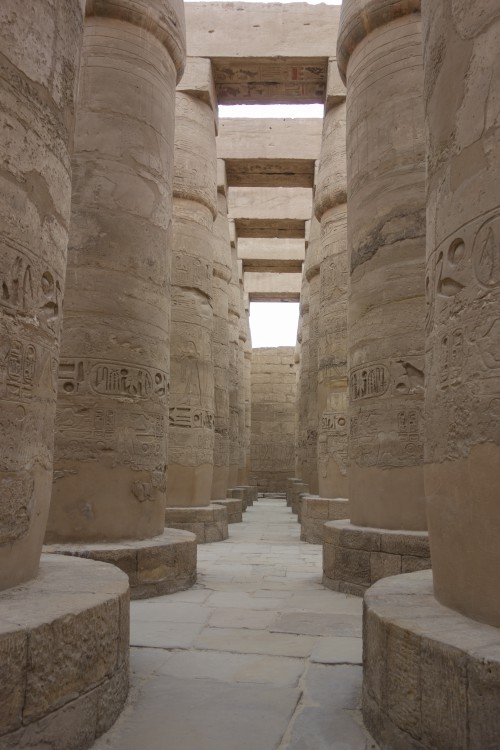 |
 |
 |
There were also a couple of large obelisks (including the largest one ever erected) from Hatshepsut's dynasty. Back in the day, obelisks were always paired symmetrically, which is a little odd since nearly every obelisk you see now is solo. Many of the Egyptian obelisks are now outside of Egypt, including a couple in Paris. The "unfinished obelisk" that we had seen in Aswan was supposed to have been brought to Thebes, but of course never made it. In the southeast part of the complex, there was a Sacred Lake (which is now filled with tap water), where there used to be a long underground tunnel from the Nile to fill it. While every ruler added on to the complex during his/her reign, Ramesses II thought he was more important, and would "erase" previous carvings and put in his own, using sunken reliefs rather than raised reliefs, making it difficult for anyone to (easily) erase his reliefs. Some of his sunken reliefs were several inches deep. He may have been the impetus for the term Megalomaniac. There is an "Avenue of Sphinxes" that connected, and will connect again, Karnak to Luxor, but a lot of the city needs to be re-routed to allow for a 2 mile pedestrian walkway that isn't criss-crossed by present-day streets. So instead of walking that, we walked out of Karnak and to the car. On the way out of Karnak, Ehab pointed out that the new tile flooring put in at Karnak is turning to rubble after just a couple decades, whereas the stone flooring from 3500 years ago is still going strong.
 |
 |
 |
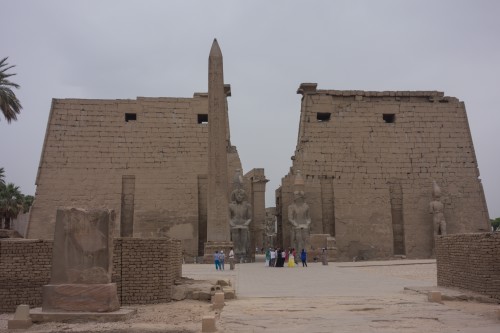 |
 |
 |
 |
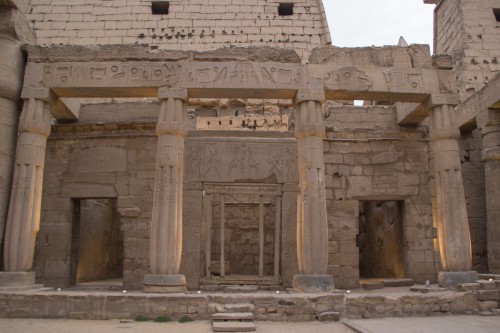 |
We got to Luxor just before dusk. The Temple has a giant obelisk out front, along with multiple statues of Ramesses II, including one that was just a head, but an impeccably preserved one. Ramesses would change the statues as well, but there was one of King Tut (who ruled shortly before Ramesses) that was identifiable by his wife's name (none of Ramesses' 34 wives had that name). There is a mosque in the middle of the Temple (Abu Haggag Mosque), which shows how much silt had deposited over the years. About 20-25 feet up one of the walls, you could see what used to be the front door to the mosque. When the mosque was built (around 1200 AD), the Luxor Temple was already 2600 years old. The Temple has a large open courtyard area with 74 columns, rows of 2 on the left and right, multiple rows in the back. In the back of the temple, there were some really well preserved bas reliefs, which again benefited from being covered up for so long. The simple amber lights that came on after the sun descended would have been nice at Edfu, but whatever.
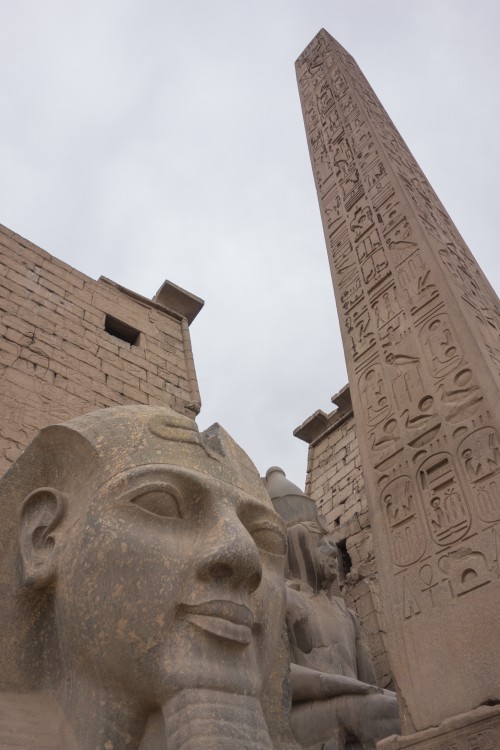 |
 |
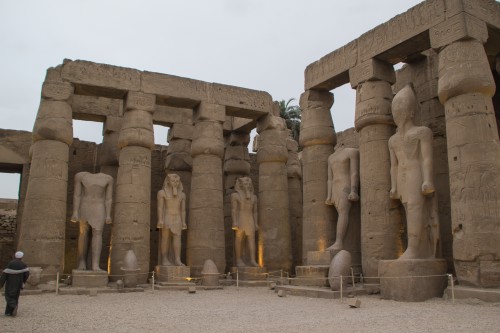 |
 |
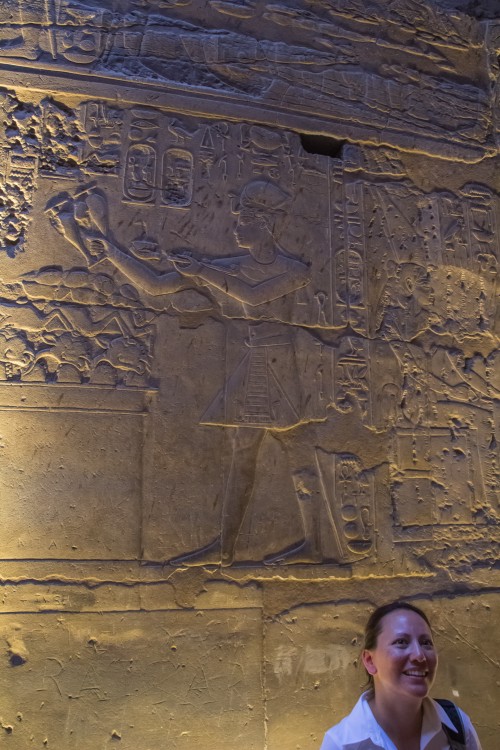 |
 |
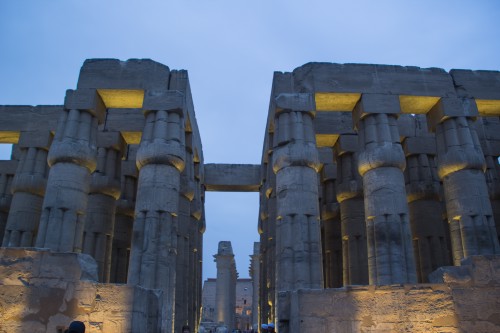 |
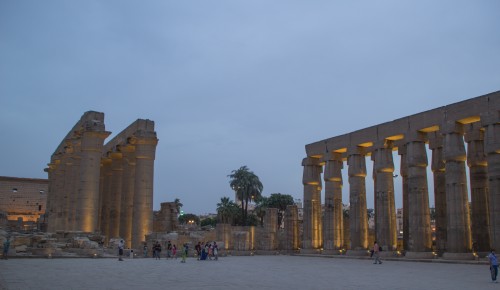 |
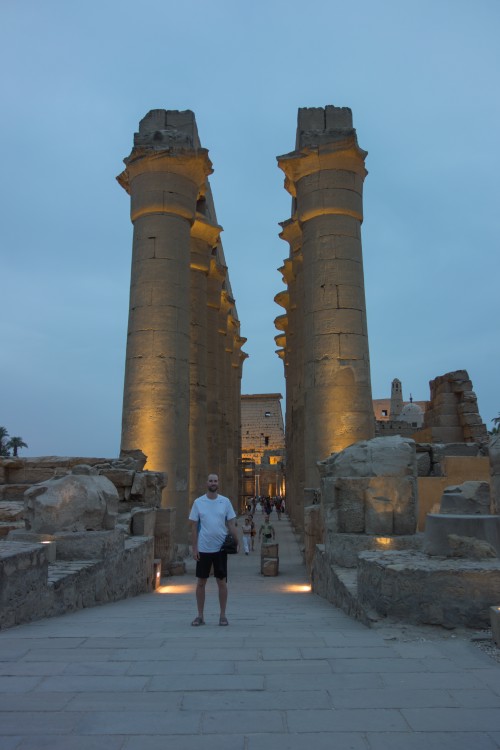 |
 |
Ehab told us that the boat does the reverse route after dropping passengers off in Luxor, and goes back to Aswan, but for 4 nights instead of 3, and that the temples are seen at different times of day - perhaps we can do that at some point in the future. By then, entire temples will likely have been reconstructed, others will have been found, and maybe photography will be allowed at the Valley of the Kings and Queens. We got back to the boat around 6:45, and it looked like we were the last ones back. We were very tired, so we packed before dinner, figuring we'd have a quick dinner and then crash early. At dinner, we talked about chickens and dogs and house additions with Stuart and Heather. After dinner, we went upstairs to see a show with a whirling dervish and belly dancer, and sat with Stuart and Heather and Dan and Kate. We had no idea that a whirling dervish was a real thing, as opposed to a phrase of art. The Whirling dervish was awesome, we have no clue how the guy didn't get dizzy or fall or throw up. He must have been going for about 10 straight minutes, spinning the same way the entire time. The belly dancer kept trying to get volunteers to dance along, but no one was very interested. There was a roughly 10 year old kid that was simultaneously fascinated by, and terrified of, the belly dancer.
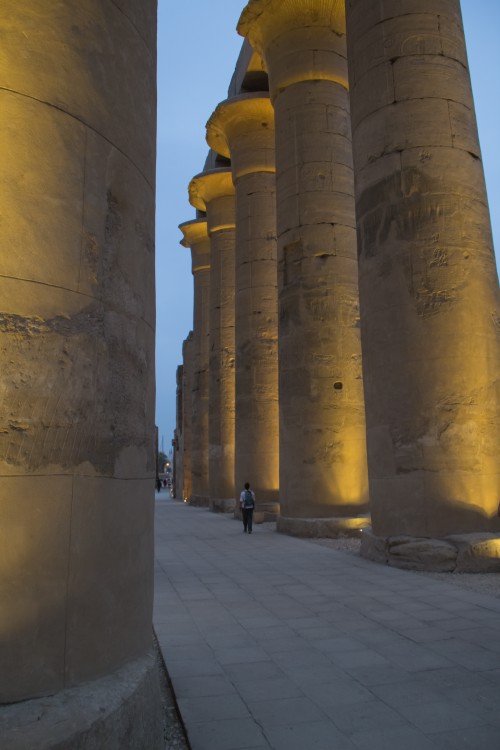 |
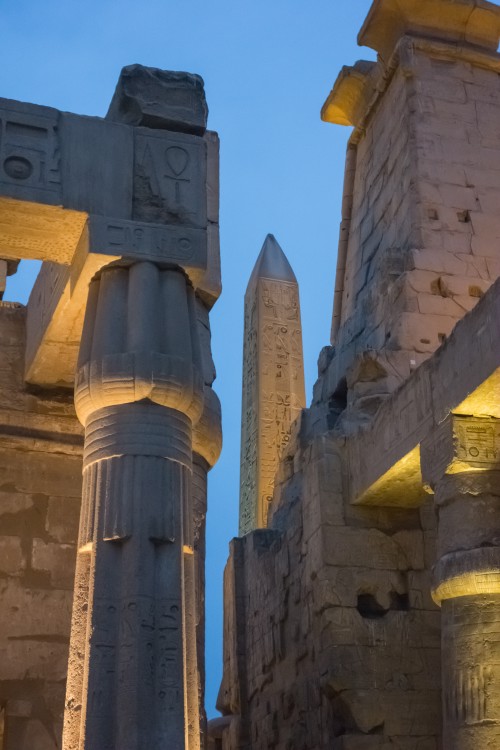 |
 |
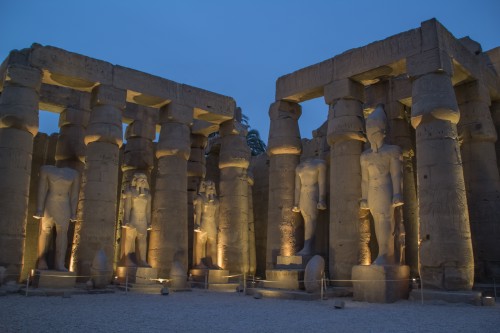 |
 |
 |
 |
 |
 |
 |
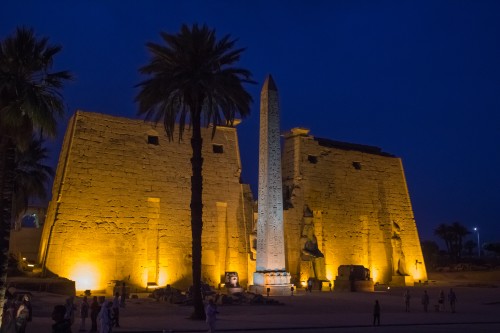 |
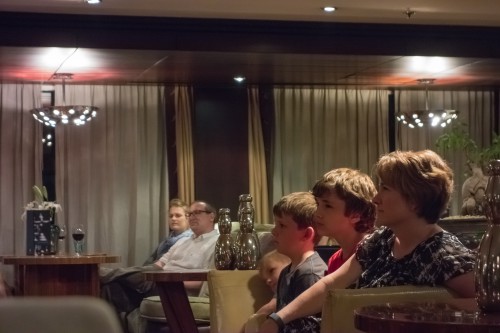 |
 |
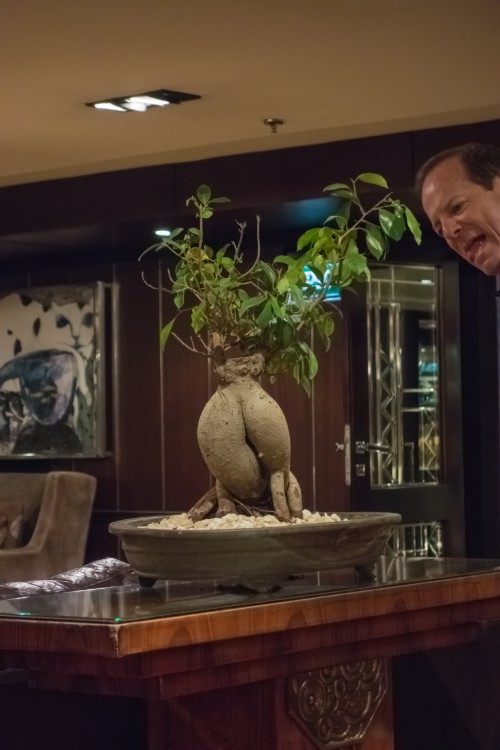 |
We found out we were on an earlier flight the next morning, and would be leaving the boat at 5:45am, so no sleeping in yet again. As we continued to get rounds of drinks, we discussed 4/20, joking about upgrades (Stuart was giving good natured ribbing to Dan and Kate getting an upgraded room for their honeymoon), Lord Howe Island, whether airplanes should charge by the pound, and so on. We also discussed whether the bonzai tree nearby looked like a woman's backside (it totally does, even without several rounds of drinks). Next thing we knew, it was 11:30, and we'd closed down the bar for the third night in a row, and fourth time in eight days (Petra being the fourth). We've been having a great time, but we need to get some sleep one of these days.